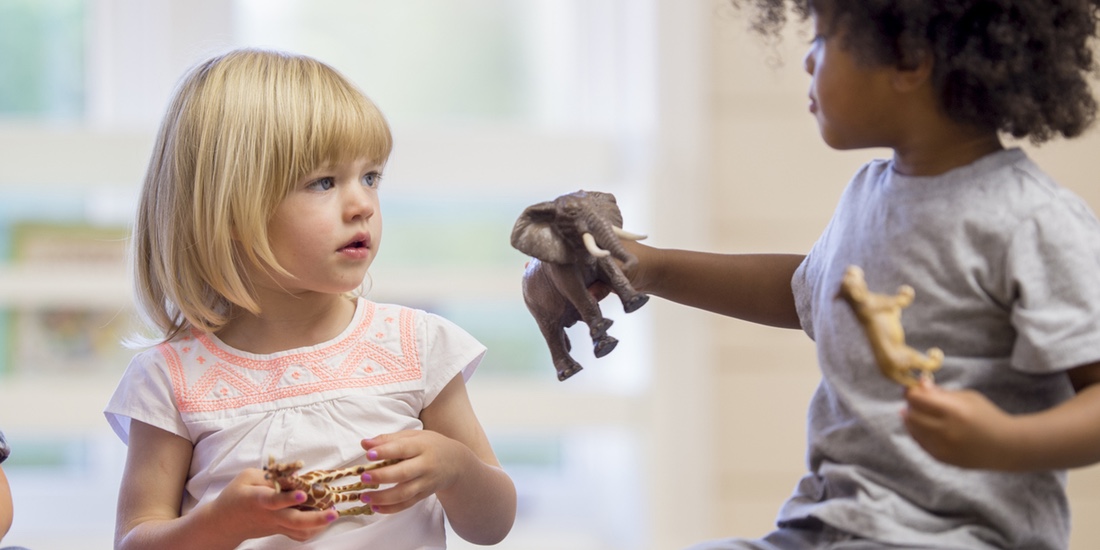Simply saying “Share!” holds little meaning for children. Young children are egocentric and concrete thinkers. Their experience of the world is immediate and focused on what is tangible. Learning social norms and developing the self-control and ability to adjust behavior to those norms takes practice and support.
Learn
Basic Concepts
Why do we ask children to share? What does it mean to share? Do we always have to share? What is the purpose of sharing?
- First, we need to ask ourselves, “Is sharing something we do (as grown-ups) and therefore expect children to do?” Before we can set expectations for young children around behavior, we must first consider the motivation behind our expectations, and if young children are able to meet our expectations successfully.
- Why are we asking children to share? Is it because of social acceptance or because it is a value we hold for how we interact with others?
- Are there circumstances when not sharing is okay? What are they?
- Sharing is a social and cultural expectation rooted in the belief system that treating others fairly and equal distribution of material possessions is important.
- How this is reflected back to children through family life and daily experiences is unique to every family and community. Modeling real-life examples of your expectations is paramount to helping them integrate our values.
- Set clear expectations.
- When sharing limited resources, the expectation is that we do have to share regardless of the type of sharing (more below).
- It is expected that the handover will be peaceful and reasonable.
Types of Sharing
- Take turns – One person uses the item for a finite period of time and the other person waits for their turn.
- Often, the most successful choice with young children.
- It is for this reason that timers are often found in classrooms.
- Give another person a chance to use your possession, but you maintain ownership.
- So often we hear, “Share!”, but really what they mean is “Give the other child the toy you are playing with because: 1) they are our guest; or 2) it belongs to you, and you get to play with it all the time and your friend wants it now.”
- Cooperatively using possessions between two people, but it really belongs to one person.
- Likely going to be most successful if there is more than one item.
Just Remember
- “Take turns” is most successful for young children. Simply saying “Share!” holds little meaning for them.
- Cooperatively using possessions between two or more people is most successful when there is more than one item to “share”.
- Model real-life examples of your expectations for “sharing” with your children that are reflective of your family values.
Do
What You Could Do and What You Could Say
| What You Could Do | What You Could Say |
|
|
Here are more Helpful Rules for Sharing – with a printable script!
